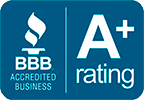
What to Expect During a Professional AC Repair Visit: A Step-by-Step Breakdown
Ask us about our service plans!
Heat Pump Repair When You Need It
When your air conditioner stops working—or even just starts acting a little off—it’s easy to feel frustrated or unsure about what comes next. Should you try to fix it yourself? Call a pro? And once you do book a service call, what exactly happens during a professional AC repair visit?
If you’ve never had to call in an HVAC technician before, or if past experiences have left you wondering what should be standard practice, this blog is for you. We’re giving you a complete, step-by-step breakdown of what to expect during an AC repair appointment so you can feel informed, confident, and prepared.



Why Call a Professional for AC Repairs?
Before we dive into the visit itself, it’s important to understand why hiring a licensed technician is the smart move when your AC isn’t performing properly.
Modern air conditioning systems are complex machines with many interconnected parts—compressors, refrigerant lines, sensors, coils, and electrical components—all working together to maintain a comfortable temperature. A misstep in DIY repairs could not only make the problem worse but also void your warranty or pose a safety risk.
Certified HVAC professionals bring:
- Diagnostic tools and training to identify the root cause
- Experience with various brands and models
- Knowledge of local building codes and regulations
- Safety practices and proper handling of refrigerants
Now, let’s walk through what actually happens when that tech arrives at your door.
Step 1: Arrival and Introduction
Once you schedule a repair, your technician will usually give you a call or text when they’re en route. When they arrive, expect a brief introduction—professionals should always identify themselves, mention the company they’re with, and offer to explain the process.
They may also ask a few initial questions, such as:
- When did you first notice the issue?
- What symptoms is the unit showing (e.g., warm air, no airflow, loud noises)?
- Has this problem happened before?
This information helps them get an initial understanding of the problem before diving into the equipment.
Step 2: System Inspection and Diagnosis
Next, the technician will begin inspecting your system. This is the most important part of the AC repair visit, as accurate diagnosis is essential to fixing the problem correctly.
What they check:
- Thermostat: Confirm it’s functioning and correctly set
- Air filter: A clogged filter is a common and easy-to-fix issue
- Indoor unit (air handler): Check the blower, coils, and electrical connections
- Outdoor unit (condenser): Inspect the compressor, fan, refrigerant lines, and capacitor
- Ductwork and airflow: Look for blockages, leaks, or disconnected sections
- Drainage lines: Ensure condensate is draining properly to prevent moisture issues
Tools used during diagnosis:
- Multimeter (to test electrical currents)
- Refrigerant pressure gauges
- Thermometer or infrared gun to check temperature differentials
- Leak detection tools (for refrigerant leaks)
This diagnostic process may take anywhere from 20 to 60 minutes depending on the complexity of the problem.
Step 3: Explanation of the Problem and Repair Options
Once the problem has been identified, the technician will explain:
- What’s wrong
- Why it’s happening
- What needs to be done to fix it
They’ll also provide a breakdown of your options. In many cases, they’ll be able to offer multiple solutions—for example, repairing a component vs. replacing it—and help you weigh the pros and cons of each.
This is also when you’ll receive an estimate or quote for the repair. Reputable companies are transparent about costs and will walk you through what’s included before starting any work.
Step 4: Performing the Repair
If you approve the quote, the technician will go ahead with the repair—often on the same visit. Many HVAC companies carry a wide range of common parts in their service vehicles, so things like:
- Capacitor replacements
- Thermostat repairs
- Drain line flushes
- Fan motor replacements
- Contactors and relays
…can usually be done immediately.
For more complex issues (like compressor failure or refrigerant recharge with leak repair), the technician may need to schedule a follow-up visit or order specific parts.
During the repair, expect the technician to:
- Work methodically and carefully
- Follow safety protocols, especially when handling refrigerant or electrical components
- Use protective gear or floor coverings if necessary to protect your home
Step 5: System Testing and Final Checks
Once the AC repair is complete, the technician won’t just pack up and leave—they’ll take time to test your system thoroughly to make sure everything is running properly again.
They’ll confirm:
- Proper airflow through vents
- Correct refrigerant pressures
- Functioning thermostat communication
- No strange noises or signs of short cycling
- Balanced temperatures throughout the system
If everything checks out, they may also optimize the system by checking the blower speed or adjusting the thermostat calibration.
Step 6: Post-Repair Explanation and Maintenance Tips
After testing, the technician will explain what was done, review any new parts installed, and answer any remaining questions. You’ll often receive:
- An itemized receipt
- Details about warranty coverage on labor and parts
- Notes on your system’s current health and any future maintenance recommendations
They may suggest preventative measures like:
- Replacing filters regularly
- Scheduling annual maintenance
- Clearing debris from around the outdoor unit
- Installing a surge protector for the system
This helps you keep your AC in peak shape and avoid future breakdowns.
Step 7: Clean-Up and Departure
A professional technician will always clean up after themselves—disposing of old parts, wiping down surfaces, and making sure your home is left exactly how they found it (or better).
Before leaving, they’ll confirm that you’re satisfied with the repair and understand how to operate your system if anything was reset or reprogrammed.
What You Can Do to Prepare for a Repair Visit
To make your AC repair appointment go as smoothly as possible, here are a few things you can do in advance:
 Clear the Area:
Clear the Area:
Make sure there’s easy access to your indoor air handler, outdoor condenser, and thermostat.
 Know the History:
Know the History:
Be ready to explain the issue clearly, how long it’s been happening, and whether your unit has had prior problems or repairs.
 Secure Pets:
Secure Pets:
To keep both your pets and the technician safe, it’s a good idea to keep dogs or cats in another room during the visit.
 Take Notes:
Take Notes:
Write down any strange noises, smells, or changes in performance that could help with diagnosis.
When Should You Call for AC Repair?
Knowing when to call in a pro can save you from costly emergency breakdowns. Here are some signs you should never ignore:
- Warm air blowing from vents
- Weak or uneven airflow
- Loud or strange noises (grinding, rattling, hissing)
- Frequent short cycling
- Rising energy bills without a change in usage
- Water leaks near the unit
- Unresponsive thermostat
If you notice any of these issues, schedule a professional inspection right away. Waiting too long can cause small issues to snowball into expensive repairs—or even full system replacements.
The Value of Routine Maintenance
While repair visits are sometimes unavoidable, many common AC problems can be prevented through regular maintenance. Schedule a professional AC tune-up at least once a year—preferably in early spring—to keep your system running efficiently and catch potential issues early.
During a maintenance check, technicians will:
- Clean the evaporator and condenser coils
- Check refrigerant levels
- Inspect electrical connections
- Clean or replace air filters
- Test system performance
- Lubricate moving parts
Investing in maintenance now helps you avoid breakdowns later—especially during Alexandria’s hottest months when your AC works the hardest.
How Long Does an AC Repair Visit Typically Take?
One of the most common questions homeowners have is, “How long will the AC repair visit take?” The answer can vary depending on the issue, the complexity of your HVAC system, and the availability of replacement parts—but here’s a general breakdown to help you plan your day.
Average Time for a Standard Visit: 1 to 2 Hours
Most routine repair calls fall within this window. For example:
- Replacing a faulty capacitor or contactor
- Swapping out a malfunctioning thermostat
- Cleaning clogged drain lines
- Resolving electrical connection issues
These are all tasks that a well-equipped technician can typically complete during the initial visit.
Complex Repairs: 2 to 4+ Hours
More involved repairs—such as replacing a blower motor, fan motor, or damaged control board—may take longer. In these cases, technicians may need to:
- Diagnose the issue more thoroughly
- Disassemble more of the unit
- Test additional components
- Retrieve parts if not stocked in their truck
For major repairs, especially involving refrigerant leaks or coil replacements, the visit may be split into two appointments: one for diagnosis and one for the actual repair after parts arrive.
Emergency Situations and Older Systems
If your AC system is older or has been poorly maintained, repairs can take longer due to:
- Rusted or hard-to-remove components
- Outdated wiring or missing documentation
- Previous improper repairs that need correcting
In these situations, the technician may recommend replacing part—or all—of the system instead of attempting repeated patchwork fixes.
What You Can Do to Speed Things Up
- Have your thermostat accessible and operational.
- Make note of unusual symptoms or behavior the unit has been showing.
- Clear space around your indoor and outdoor units so the technician can get to work quickly.
- Be available to answer questions about system history or preferences.
By being prepared and communicating clearly, you help ensure a smooth and efficient repair visit.
Understanding AC Repair Costs: What’s Normal and What’s Not
Another important aspect of the repair visit is cost. No one likes surprise charges, and knowing what to expect can help you budget effectively and avoid being taken advantage of.
What’s Included in a Repair Estimate?
A transparent quote should include:
- Labor costs (hourly or flat rate)
- Parts and materials
- Diagnostic fee (sometimes waived if you go forward with the repair)
- Any applicable taxes or service charges
Always ask for a written estimate before approving the work.
Red Flags to Watch Out For
- Vague or verbal-only pricing with no breakdown of costs
- Pushy upselling that feels unrelated to your current issue
- Charging for unnecessary parts or services
- Lack of warranty on parts or labor
A trustworthy AC repair company will walk you through the costs, answer your questions, and help you prioritize necessary repairs while giving options when possible.
Understanding the time and cost involved in AC repair helps you plan better and ensures you’re working with a service provider you can trust. That way, your system—and your peace of mind—are restored quickly and without unnecessary hassle.
Know What to Expect, Stay Comfortable
A professional AC repair visit doesn’t need to be stressful or mysterious. Understanding the process—from the technician’s arrival through diagnosis, repair, and final testing—helps you feel more confident and in control of your home’s comfort.
Whether it’s a quick fix or a more involved repair, working with a qualified HVAC technician ensures your system is handled safely, efficiently, and with care. And when paired with proactive maintenance, you’ll enjoy better performance, lower energy bills, and fewer surprise breakdowns all summer long.
If you’re in the Alexandria area and your AC isn’t cooling the way it should, don’t wait—reach out to a trusted local HVAC company today to schedule your repair visit and keep your home comfortable no matter how hot it gets outside.

